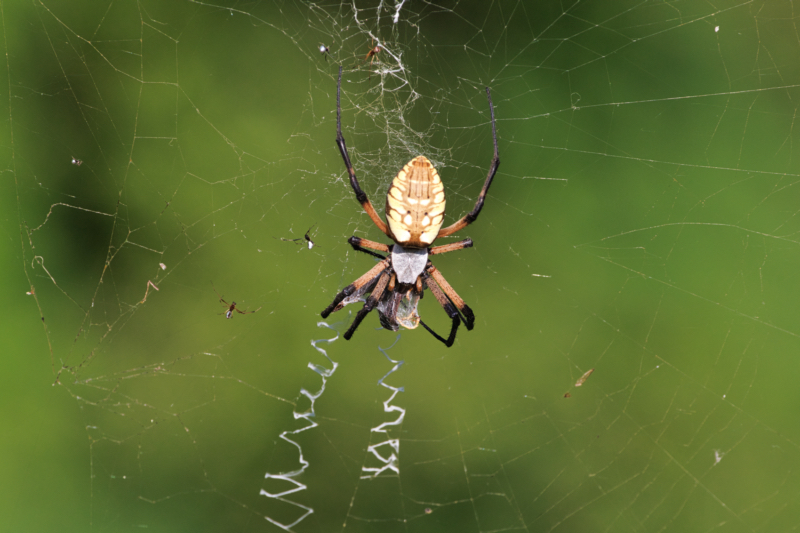A few days ago, I was driving through the Sequoyah National Wildlife Refuge in Oklahoma when I spotted a large Garden Spider repairing its web near the road at Miner’s Cove. I stopped to take some photos and was lucky enough to catch the spider in action on video, which I shared on my TikTok here [Link].
I went back to the same spot a couple days later and found the spider again. This time, it had caught a meal and was dealing with it on the web. More excitingly, I noticed several tiny baby spiders on the edges of the web – the spider’s offspring! Here is another video I took [TikTok].
Correction (November 3, 2024):
After publishing this post, I was informed by Tom Hodapp that the tiny spiders I observed are not baby Garden Spiders as I initially thought. They are actually a type of kleptoparasitic spider known as Dewdrop Spiders (Argyrodes species). Their silvery bodies mimic drops of dew, serving as camouflage on the Garden Spider’s web.
These spiders coexist with the Garden Spider, often feeding on smaller prey caught in the web and occasionally sharing larger meals. In some tropical regions, they can become aggressive and may parasitize the host spider. You can learn more about them here.
I appreciate Tom reaching out with this information and apologize for any confusion. Observing nature is always a learning experience, and I’m glad to share these new insights with you all.
Note: The title of this post has been updated to correct a misidentification. What was initially thought to be Garden Spider babies are actually kleptoparasitic Dewdrop Spiders.



Wow! I have watched them for years, and I have never seen an egg sack within the web even at the farthest point away or babies in the web with the mother. The egg sacs I have found I’ve been far away from her web. She then returns to her web half her size